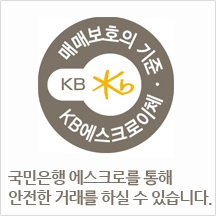The CIO's Playbook For Strategic Innovation
페이지 정보

본문
In today's fast-paced digital landscape, the role of the Chief Information Officer (CIO) has actually evolved from a conventional IT manager to a strategic leader who drives development and transformation within companies. To browse this intricate environment, CIOs must adopt a playbook that emphasizes tactical development, aligning business goals with technological improvements. This article explores the crucial parts of the CIO's playbook for strategic innovation, focusing on the crossway of business and technology consulting.
Understanding Strategic Innovation
Strategic innovation refers to the process of transforming a company's business model, operations, and client interactions through innovative innovations and procedures. According to a current McKinsey report, business that prioritize tactical development accomplish 2.5 times greater income growth compared to their peers. This statistic highlights the importance of integrating business and technology consulting into the development technique.
The Function of the CIO in Driving Innovation
CIOs are distinctively positioned to take advantage of technology for tactical advantage. They need to foster a culture of innovation within their companies while making sure that technology investments align with business objectives. Secret responsibilities of the CIO in this context consist of:
- Visionary Management: CIOs must articulate a clear vision for how technology can drive business results. This requires an understanding of both present and emerging innovations, along with the ability to interact their worth to stakeholders.
- Cross-Functional Partnership: Successful development typically includes partnership throughout departments. CIOs should work carefully with other executives, such as the Chief Marketing Officer (CMO) and Chief Financial Officer (CFO), to guarantee that technology efforts support total business methods.
- Agility and Adaptability: The speed of technological change requires a nimble method to development. CIOs need to encourage experimentation and fast version, enabling teams to quickly adapt to market demands and technological improvements.
- Data-Driven Decision Making: Leveraging data analytics is important for notified decision-making. CIOs ought to invest in data management and analytics tools to gain insights that drive innovation and improve functional efficiency.
Building a Culture of Innovation
Developing a culture that accepts development is important for long-term success. Here are some techniques CIOs can execute:
- Encourage Creative Thinking: Foster an environment where staff members feel empowered to share concepts and challenge the status quo. Regular brainstorming sessions and development workshops can promote creativity.
- Buy Training and Advancement: Continuous learning is vital in the rapidly altering tech landscape. CIOs should prioritize training programs that enhance employees' abilities in emerging innovations and innovative practices.
- Reward and acknowledge Innovation: Establish recognition programs that commemorate ingenious contributions from workers. This not just inspires individuals however likewise reinforces the value of innovation within the company.
Leveraging Business and Technology Consulting
To successfully implement strategic innovation, CIOs can benefit from interesting business and technology consulting firms. These partnerships provide organizations with access to competence, market insights, and best practices that can accelerate development efforts. Here are a number of methods which business and technology consulting can improve a CIO's tactical innovation playbook:
- Market Analysis and Pattern Identification: Consulting companies can conduct extensive market analyses to determine emerging trends and technologies that line up with the organization's objectives. This information is essential for making notified tactical decisions.
- Technology Execution: Consulting companies can help in the selection and application of technology services that drive innovation. Their know-how ensures that companies choose the right tools and platforms that fit their specific requirements.
- Modification Management: Successful innovation often needs substantial changes to processes and organizational structures. Business and technology consulting companies can offer change management methods that help with smooth shifts and minimize interruption.
- Efficiency Measurement: Consulting firms can help companies develop essential performance signs (KPIs) to determine the success of development efforts. This data-driven approach enables CIOs to examine the effect of their methods and make essential changes.
Case Studies of Successful CIOs
Several companies have successfully carried out strategic development under the management of their CIOs. For instance, the CIO of a leading retail chain leveraged data analytics to boost customer experience and optimize inventory management. By integrating business and technology consulting, the CIO had the ability to determine chances for automation, resulting in a 30% decrease in operational costs and a 20% increase in client complete satisfaction.
Another notable example is a worldwide production business that adopted IoT (Web of Things) innovations to enhance supply chain performance. The CIO collaborated with a business and technology consulting firm to develop an extensive IoT strategy, leading to real-time tracking of production procedures and a 25% increase in efficiency.
Measuring the Impact of Development
To make sure that strategic innovation efforts yield tangible results, CIOs need to establish metrics to examine success. Secret efficiency indicators might consist of:
- Revenue Development: Tracking revenue generated from brand-new items or services developed as a result of development initiatives.
- Cost Cost savings: Determining reductions in functional costs through procedure improvements and automation.
- Client Complete satisfaction: Assessing changes in client feedback and fulfillment ratings following the implementation of brand-new innovations.
- Staff member Engagement: Keeping track of staff member satisfaction and engagement levels to evaluate the effectiveness of innovation culture initiatives.
Conclusion
The CIO's playbook for strategic innovation is essential for organizations seeking to prosper in the digital age. By accepting a holistic approach that integrates business and technology consulting, CIOs can drive significant change and guarantee that their companies stay competitive. As the landscape continues to evolve, the ability to innovate strategically will be a crucial differentiator for success.
In summary, the CIO must not just be a technology professional however also a visionary leader who understands the nuances of business and technology consulting. By promoting a culture of development, leveraging external knowledge, and determining the impact of efforts, CIOs can successfully navigate the intricacies of tactical innovation and position their companies for future development.
- 이전글KEONHACAI Keo Nha Cai 25.07.24
- 다음글Discover the Inavegas Community for Online Casino Scam Verification 25.07.24
댓글목록
등록된 댓글이 없습니다.


